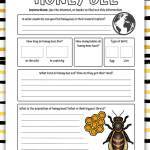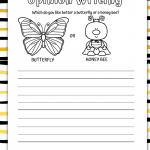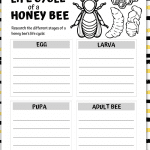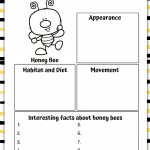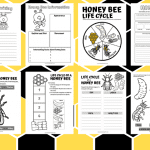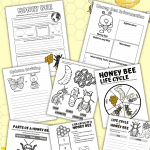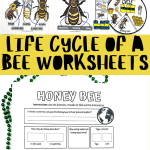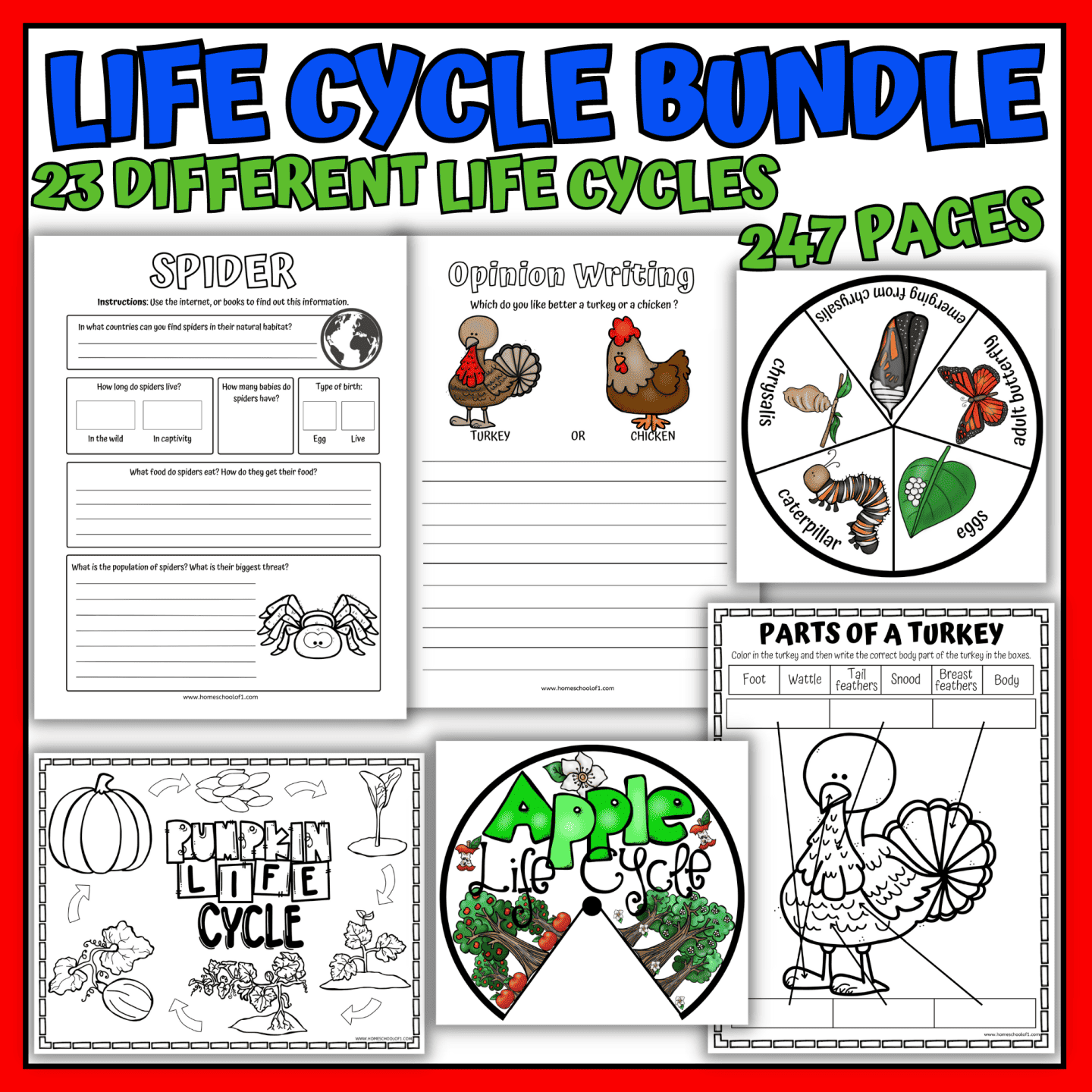Life Cycle of a Bee Worksheet (8 Free Printables)
Step into the amazing world of honey bees with our life cycle of a bee worksheet.
This activity is perfect for kids, parents, and anyone interested in nature. It helps you learn about how bees grow from eggs into adults and shows why bees are so important for our planet.
Using these free life cycle worksheets, you can help kids learn more about nature and encourage them to take care of the environment.
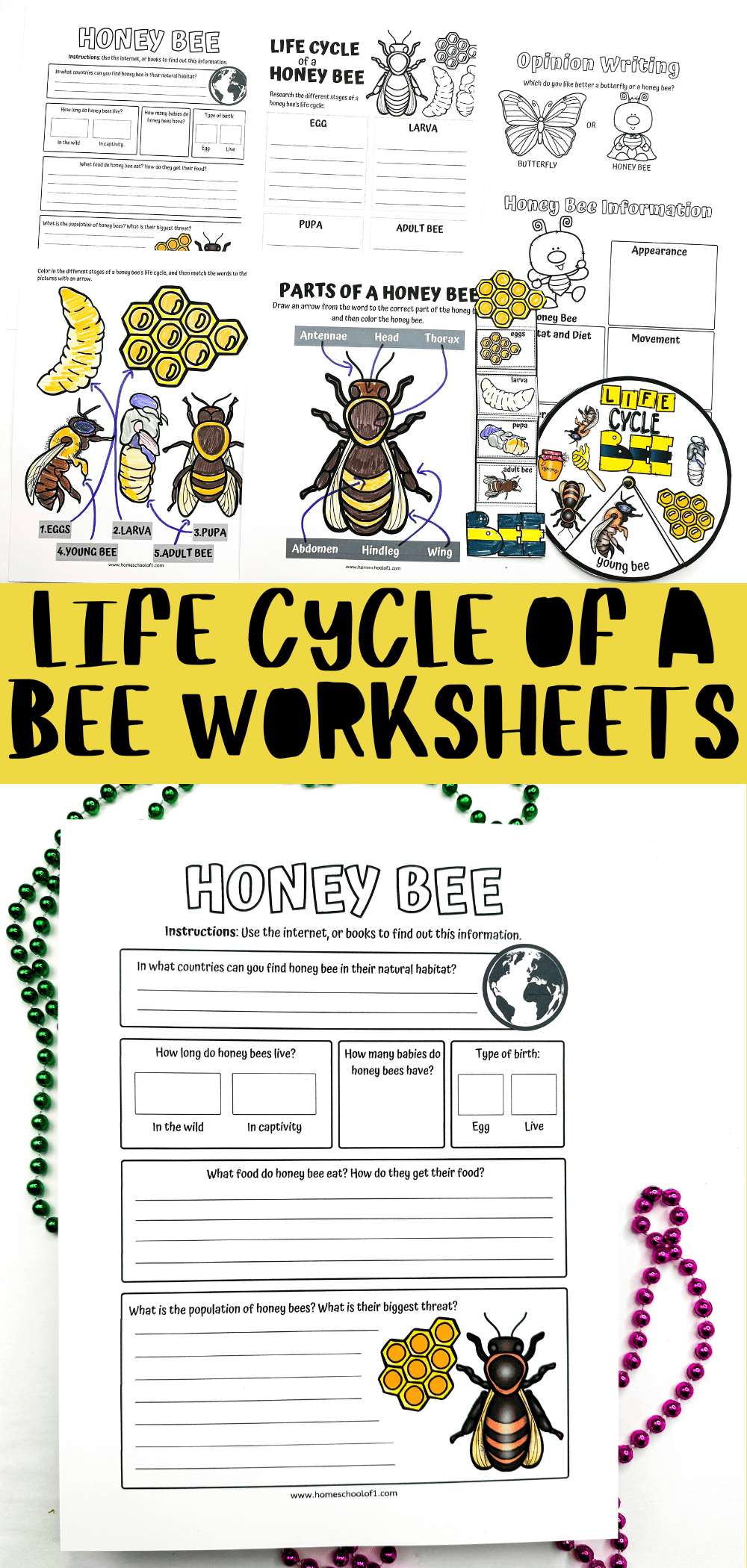
**This post may contain affiliate links. As an Amazon Associate and a participant in other affiliate programs, I earn a commission on qualifying purchases.**
Bee life cycle printable
Our bee life cycle printable is designed to engage children in learning about one of nature’s most important pollinators—honey bees.
Through a series of free printable science worksheets, kids will explore each stage of a bee’s development, from egg to adult, while discovering fascinating facts about bee anatomy, behavior, and their crucial role in the environment.
These printables are perfect for classrooms, homeschooling, or family learning, as they encourage children to connect with nature through fun and educational activities.
Whether you’re teaching about pollination or simply exploring insects, this comprehensive resource offers a hands-on way for children to develop a deeper understanding of bees.
Supplies needed:
- cardstock (printer paper will also work)
- coloring pens
- paper cutter or scissors
- glue
- brass fasteners
Research honey bee worksheets
The first printout guides children through exploring honey bees’ appearance, habitat, diet, and movement.
It encourages children to discover interesting facts about the critical role bees play in pollination and the ecosystem, promoting curiosity and a deeper understanding of these vital insects.
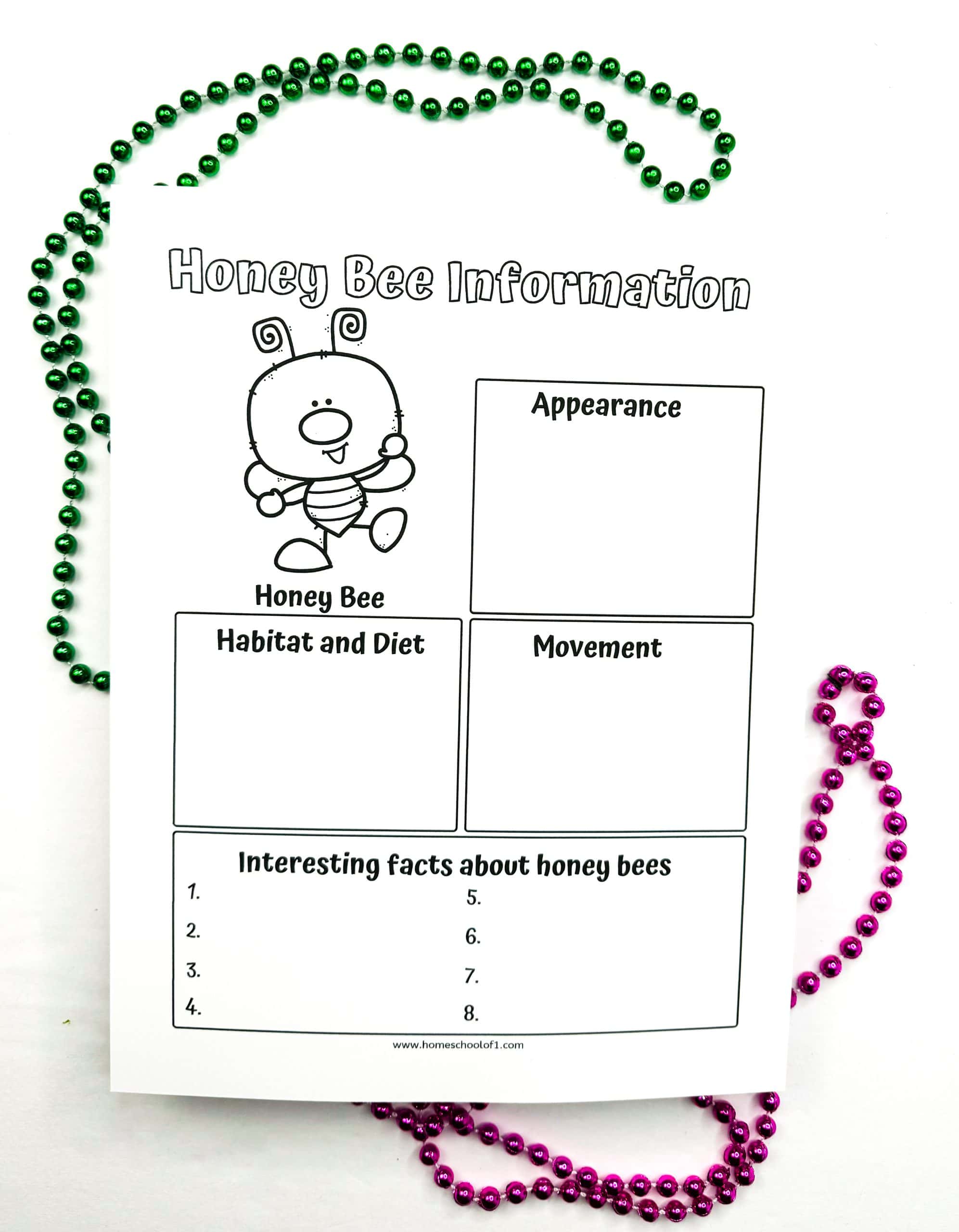
Interesting facts about bees for children
- Honey bees never sleep.
- A honey bee can fly up to 15mph.
- Honey bees beat their wings 11,400 times per minute.
- The honey bee is the only insect that produces food for humans.
- A honey bee worker only makes an average of 1/12 of a teaspoon in her lifetime.
- Bees transfer pollen between the male and female parts, allowing plants to grow seeds and fruit.
- Honey bees live in hives. The members of the hive are divided into three types. The Queen runs the hive. Workers are all female, they get the pollen and nectar, clean, and circulate the air. The drones are the male bees, and their only job is to mate with the queen.
- If the queen bee dies, workers will create a new queen by selecting a young larva and feeding it a special food called “royal jelly“.
- They have an excellent sense of smell, as they have 170 odorant receptors.
- The average worker bee lives for just five to six weeks. But the queen can live up to 5 years.
- In the summer the queen can lay up to 2500 eggs a day.
- Honeybees are located on every continent except Antarctica.
Did you know there are some bees that live in the ground? Ground bees are just as important as honey bees for pollinating fruit and flowers.
Honey bee opinion writing activity
Encourage critical thinking and personal expression with a honey bee writing worksheet that compares butterflies to bees, asking which the students prefer and why.
After completing the bee worksheet, extend their learning with our life cycle of a butterfly worksheet for a comprehensive look at pollinators.
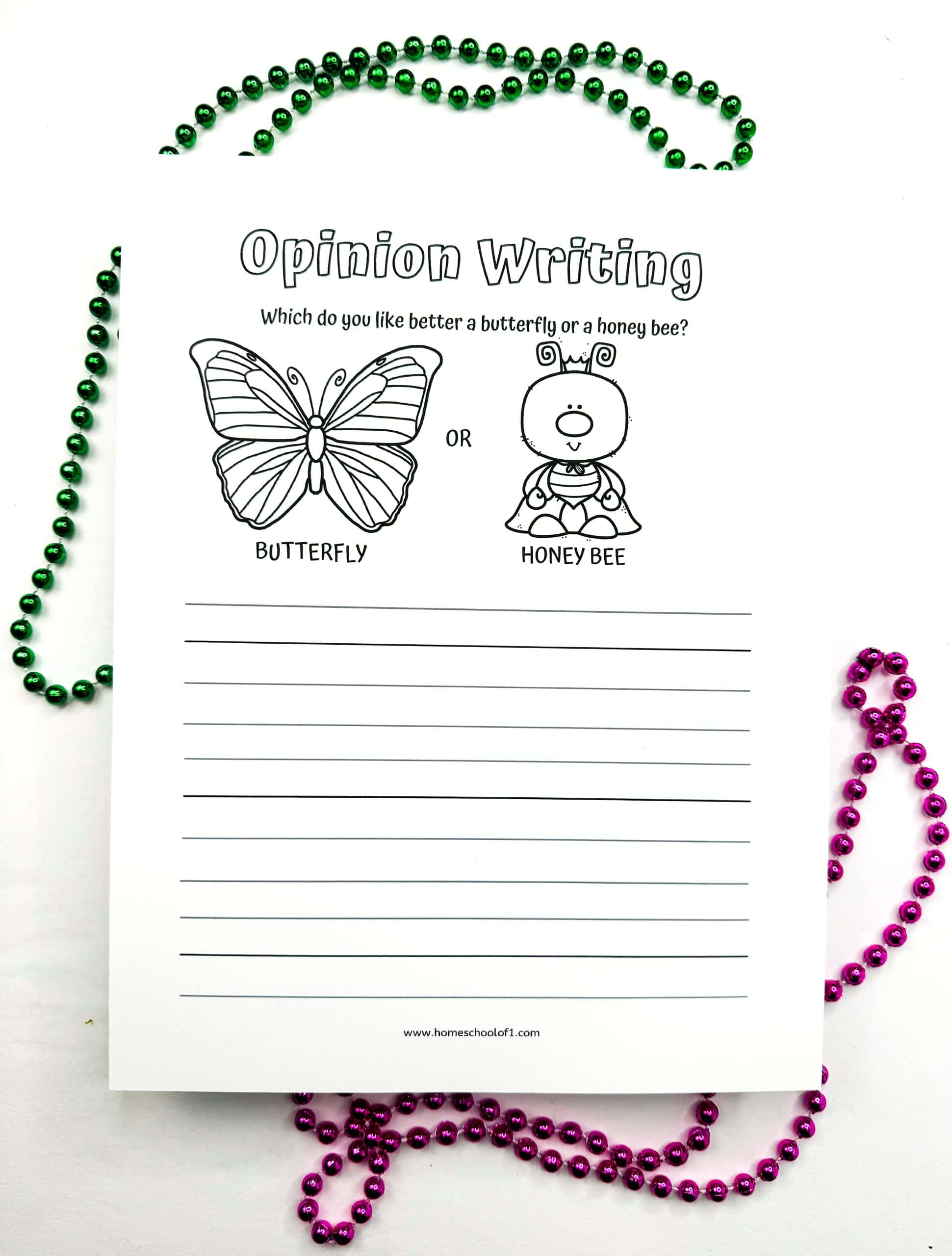
Honey bee fact sheet
This engaging honey bee activity challenges students to explore key aspects of bee biology and behavior through internet research.
Children will investigate honey bee habitats, identifying the regions where they thrive naturally.
They’ll also explore the life span of a honey bee, both in the wild and under managed conditions, and learn about their reproductive habits.
The worksheet delves into the types of food honey bees eat, how they collect it, and examines the global honey bee population.
Additionally, students will research the honey bee’s biggest threats, fostering a deeper understanding of their ecological importance.
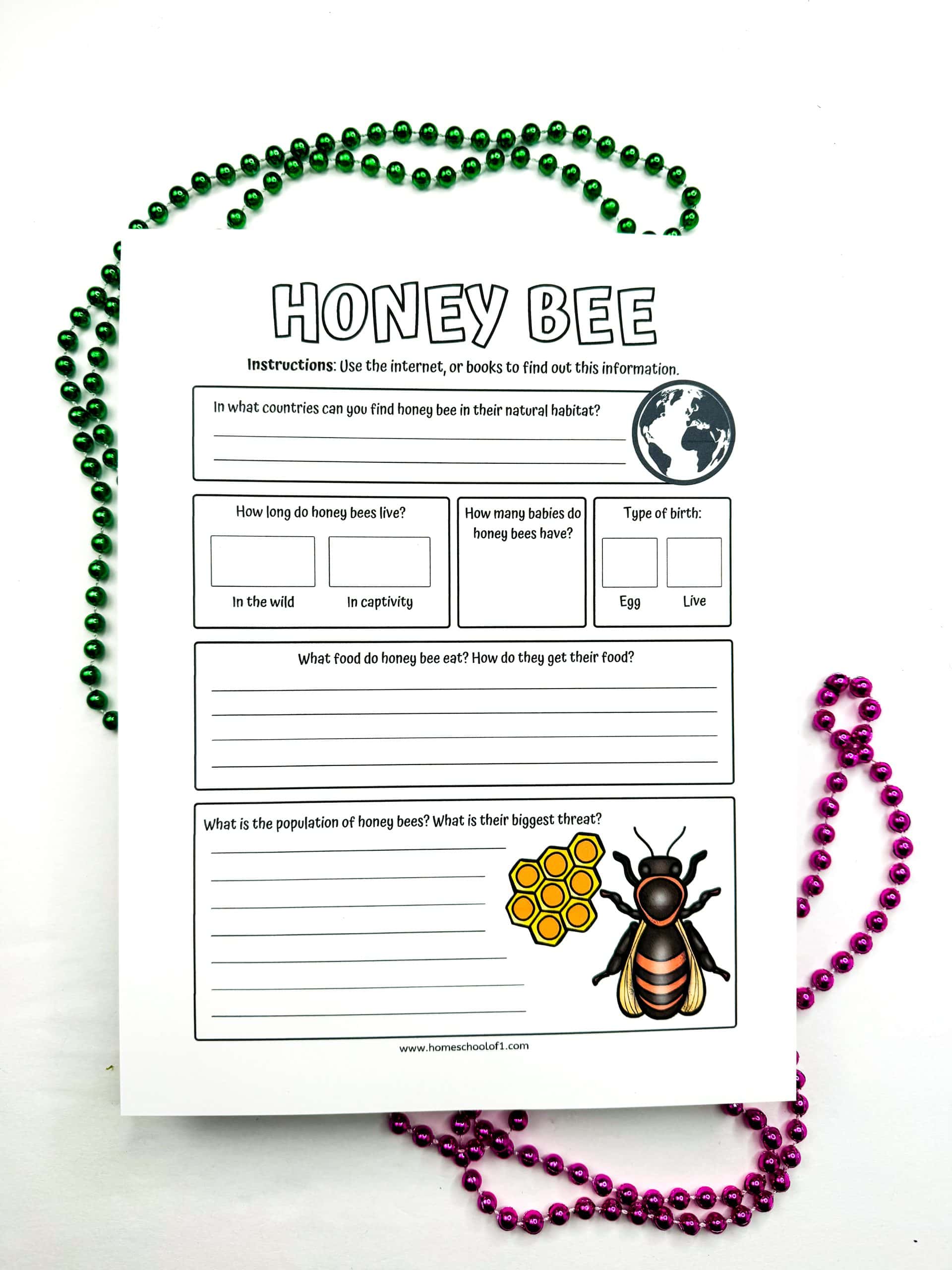
Enjoy exploring with our free honey bee word search printable for an extra bit of fun!
What are the four stages of the life cycle of a bee?
Children will dive into the fascinating transformation of honey bees by studying the egg, larva, pupa, and adult stages.
They will not only learn about the physical changes bees undergo at each stage but also discover how these stages play a crucial role in the bee’s development and contribution to the ecosystem.
This in-depth exploration helps children understand the interconnectedness of bees and their importance in nature.
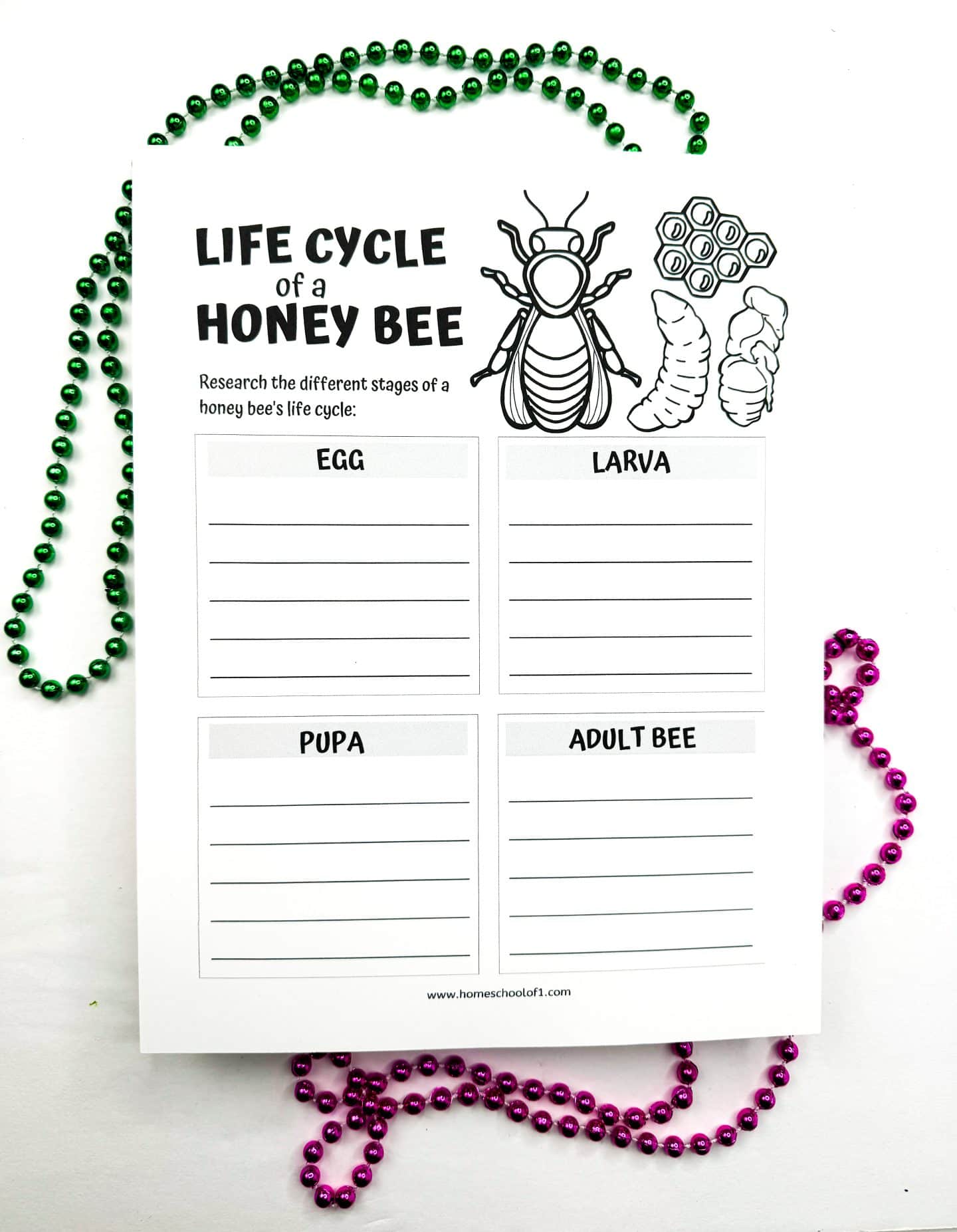
Honey bee labeling activities
Explore the world of honey bees with two engaging animal life cycle activities designed to deepen understanding through labeling and coloring. These hands-on bee preschool activities help them to learn about honey bee anatomy and life stages in a fun and interactive way.
In the label the parts of a bee worksheet, children will identify and label key features such as the antennae, head, thorax, abdomen, hindlegs, and wings before coloring the bee.
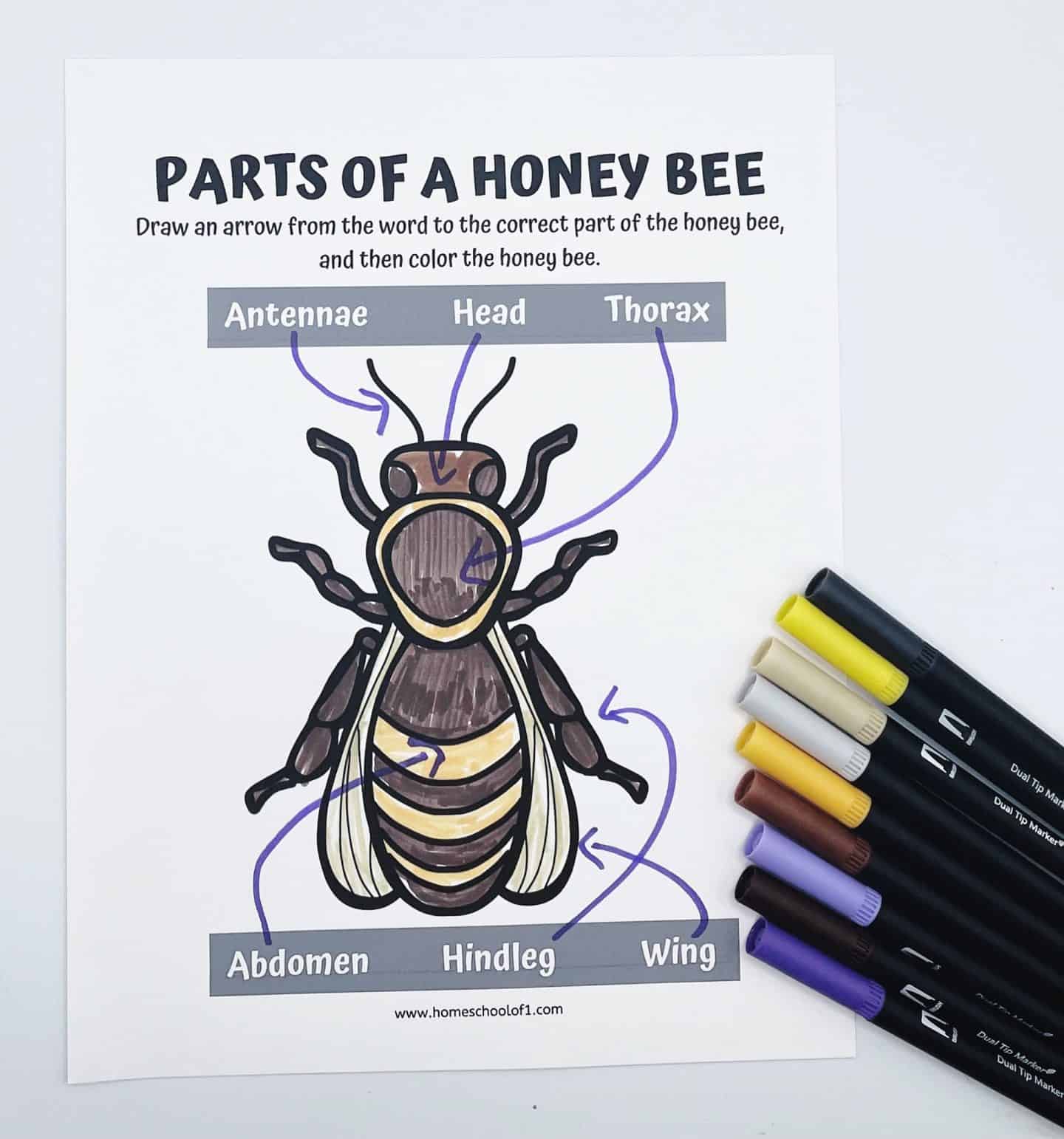
The bee life cycle coloring page allows children to color each stage of development, egg, larva, pupa, young bee, and adult, visually tracking the transformation.
By engaging in these activities, students gain a clearer understanding of bee biology and the significance of each life stage, reinforcing key concepts in a memorable way.
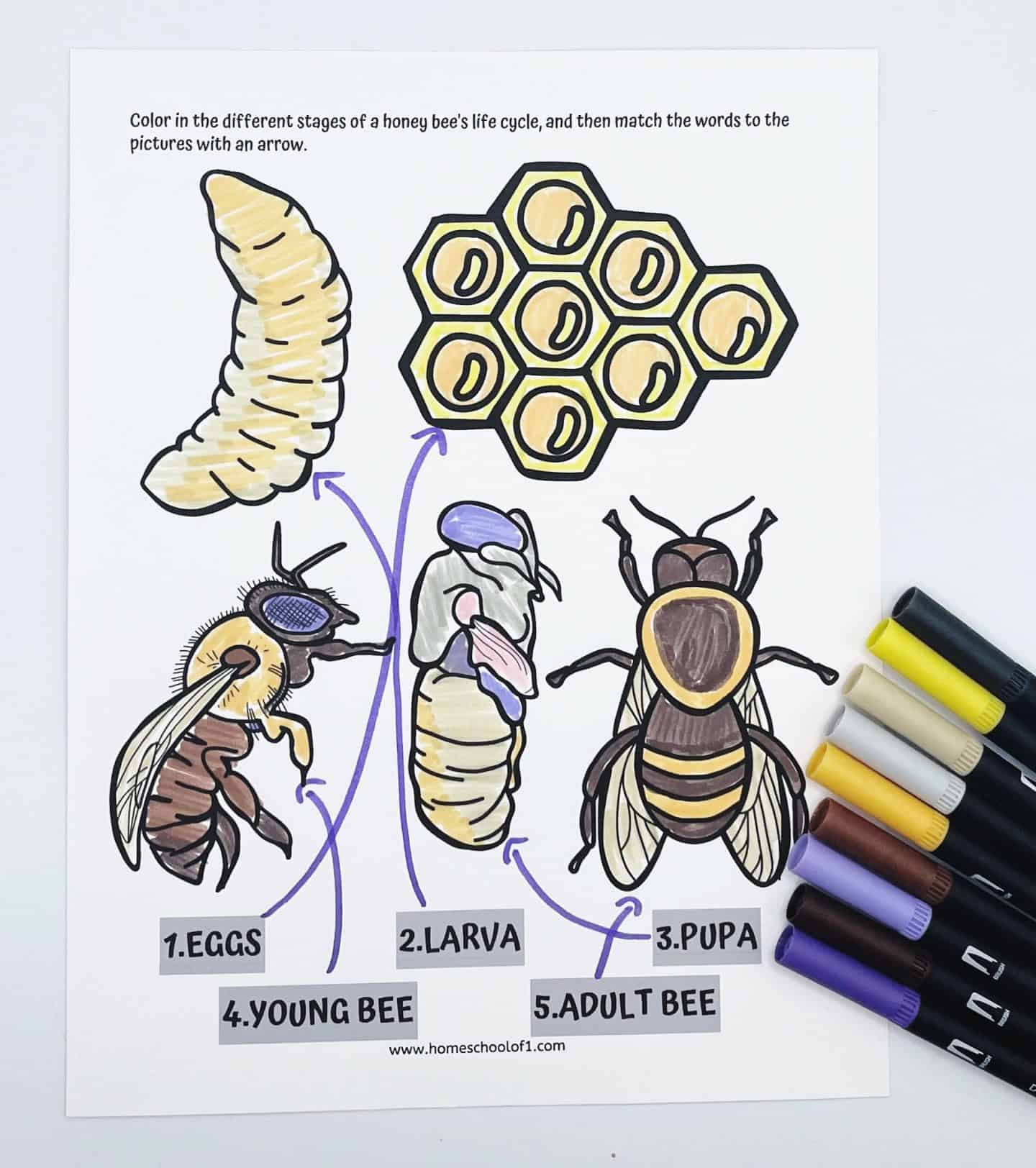
We love to add the Life Cycles book to our studies.
Bee life cycle craft
This engaging honey bee craft involves coloring, folding, cutting, and gluing, making it a fun, hands-on activity for children.
Start by coloring the images, this allows kids to personalize their bees. For younger children, you may want to pre-cut the pieces to make the process easier.
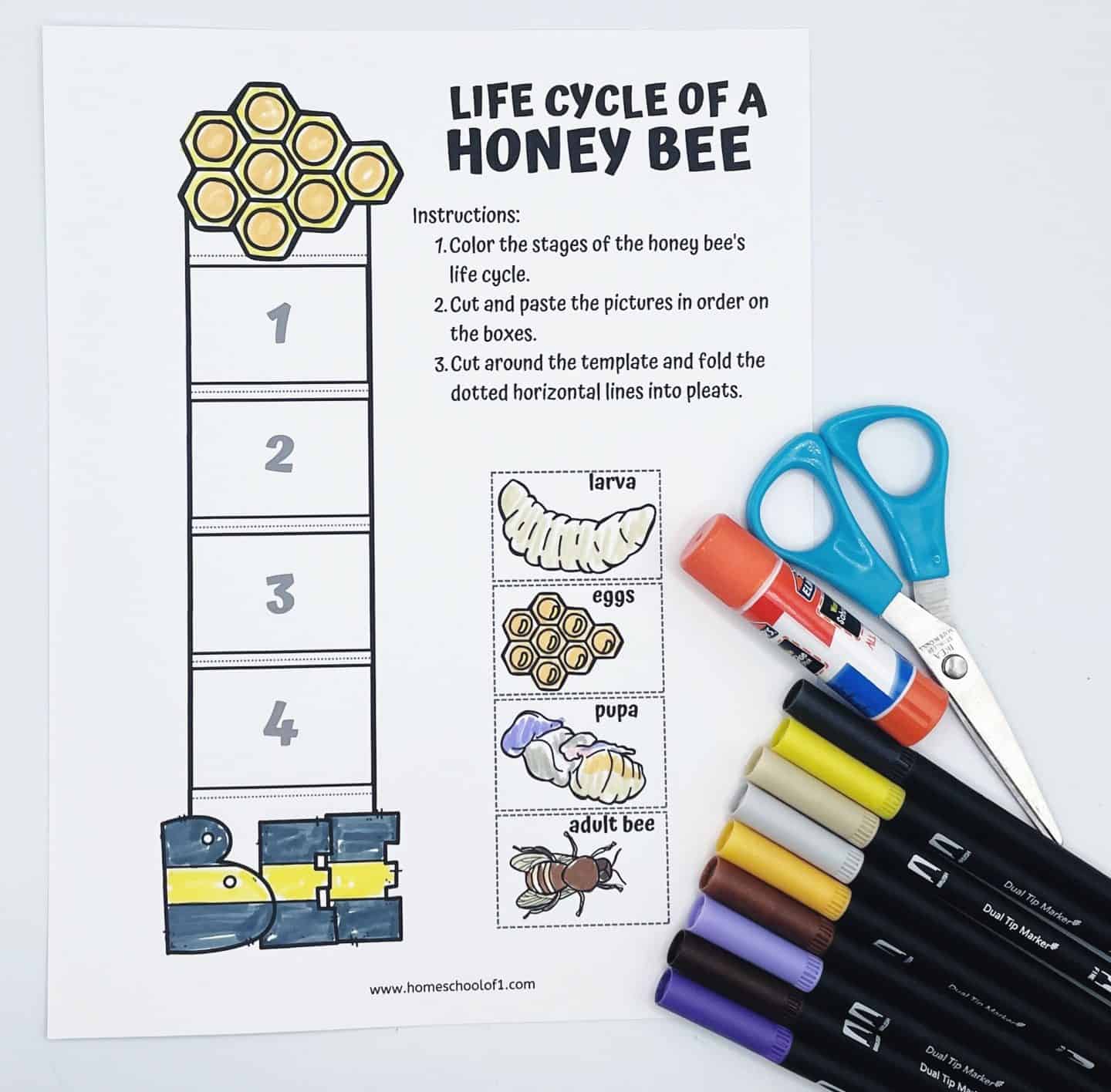
Next, guide children in cutting out the pieces themselves if they are ready for this step. Then, have them arrange the images in the correct order to represent the bee’s life cycle and glue them down under the honey image.
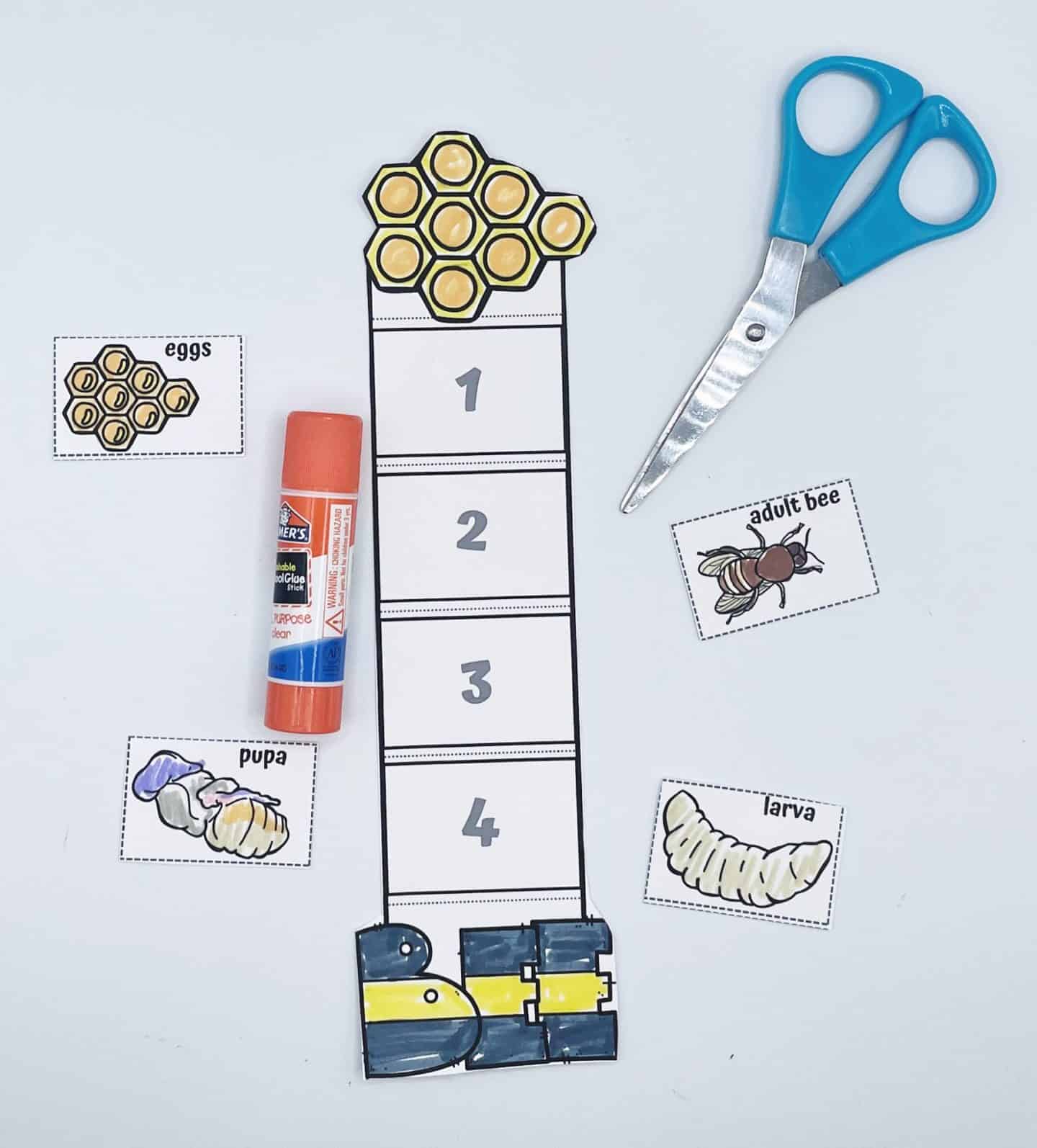
Finally, fold along the dotted lines to complete the craft, creating a visual and interactive representation of a bee’s development.
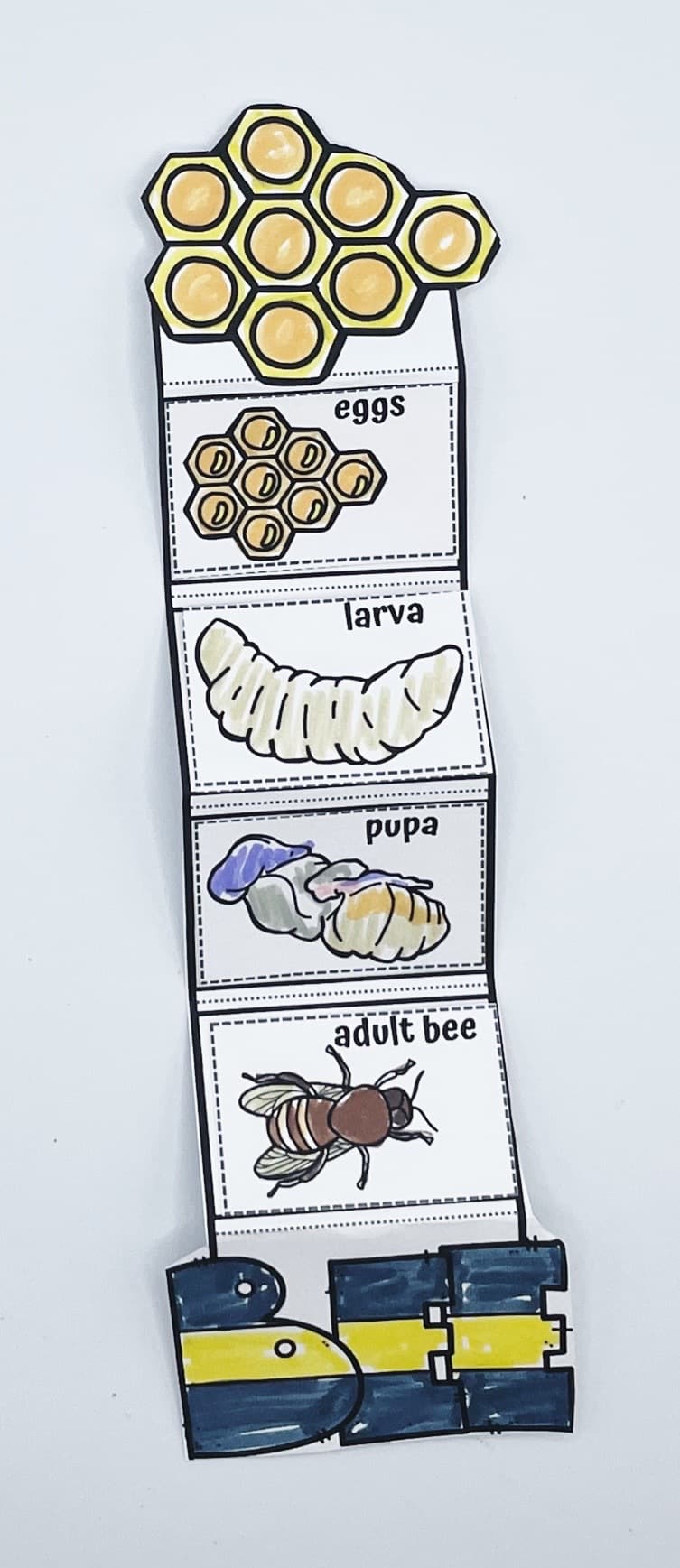
Bee life cycle wheel
The next craft is a honey bee life cycle spinner wheel, offering a fun and interactive way for children to learn.
Begin by cutting out the two circles, one depicting the stages of the honey bee’s life cycle. Carefully cut out the blank quarter section on this circle.
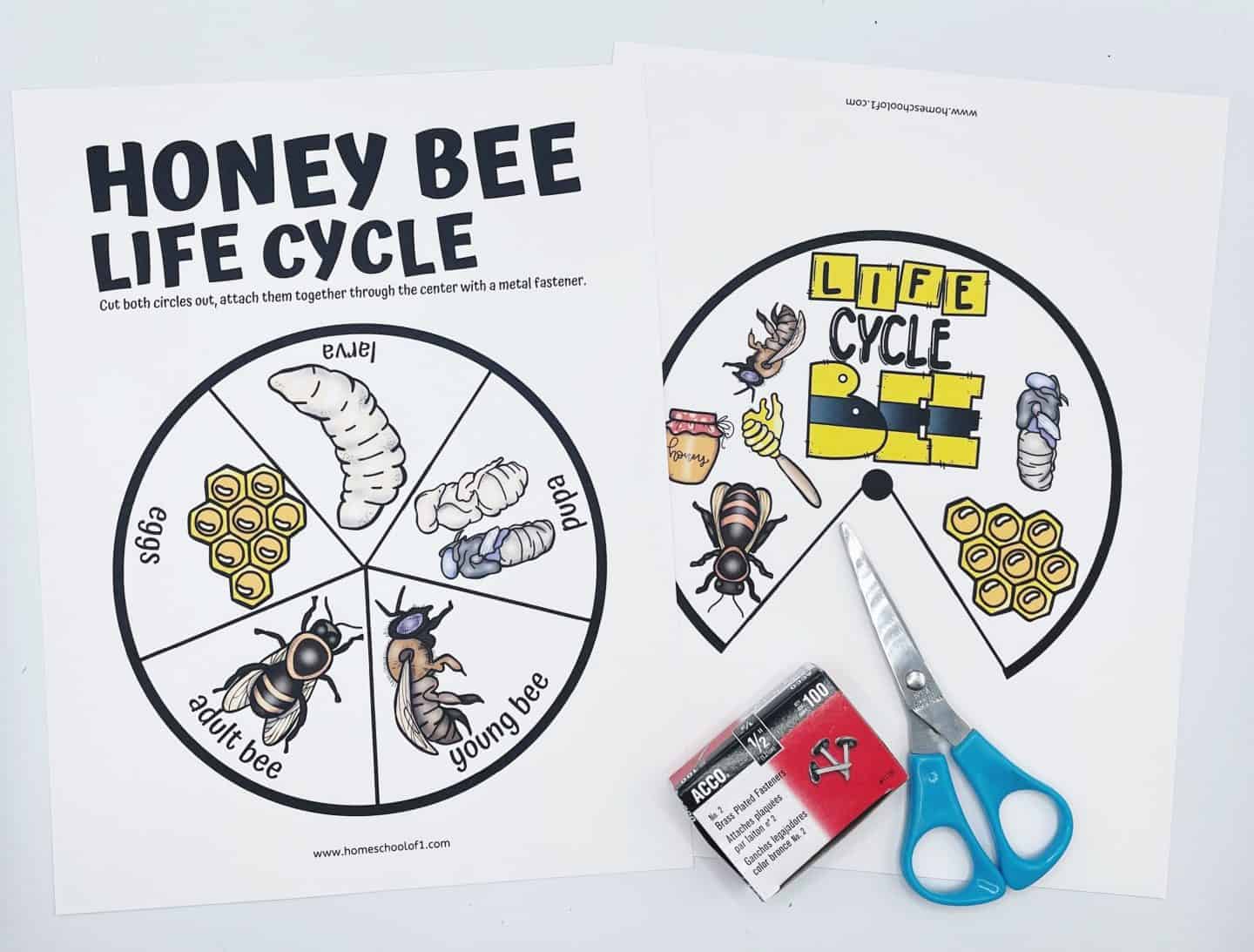
Layer the honey bee life cycle circle on top of the second circle, aligning them. Secure the two pieces together in the center using a brass fastener, allowing the wheel to spin and reveal each stage of the bee’s life cycle as you turn it.
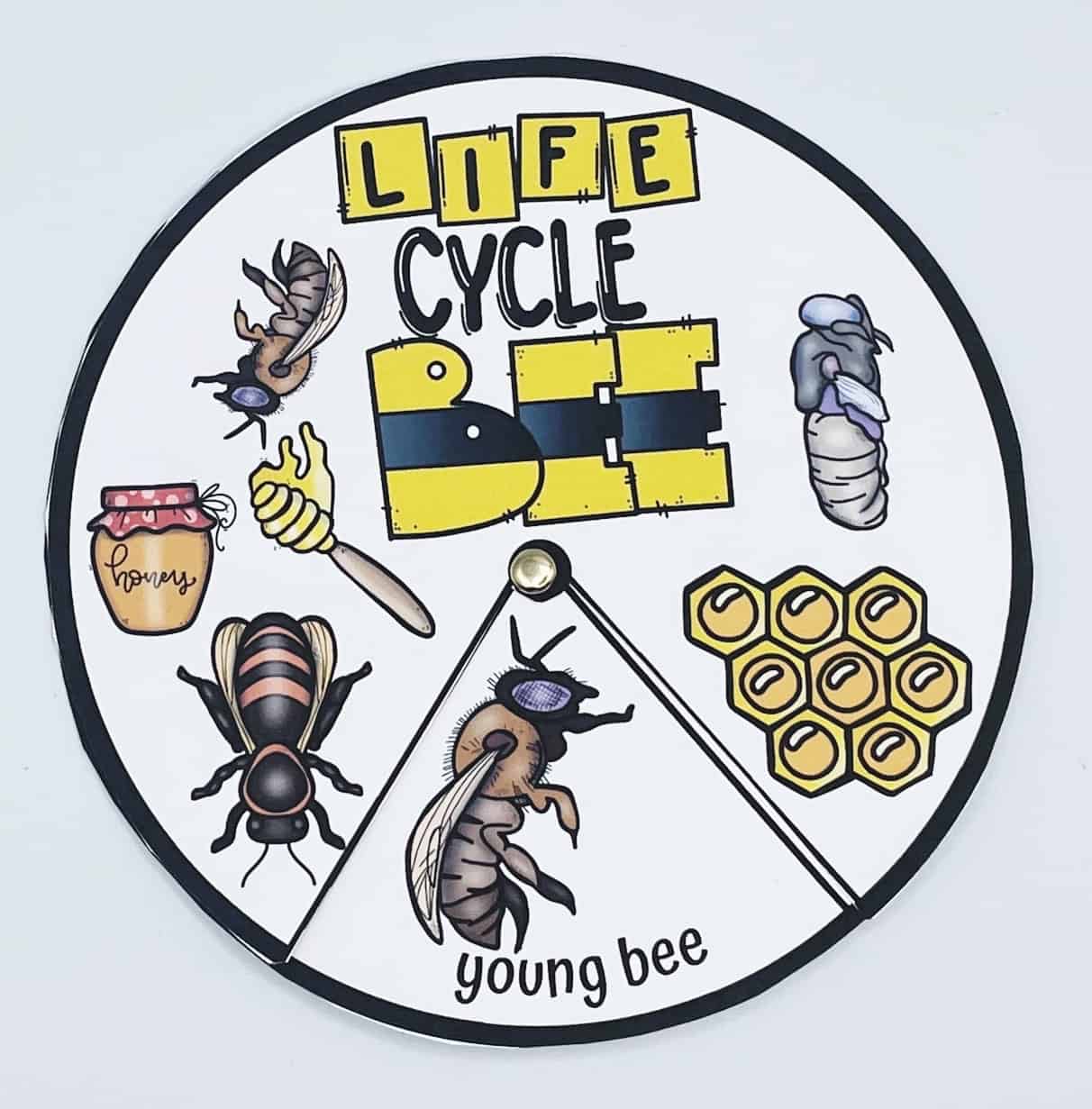
Younger children will love our b is for bee handprint printable!
Books about the life cycle of a bee
Explore the world of bees with our favorite children’s books:
- I Am A Bee introduces young readers to the life of a honeybee, from egg to pollinator, with vibrant illustrations and simple text that inspire a love for nature.
- Jill Esbaum’s Explore My World: Honey Bees combines stunning photography and fascinating facts, covering hive structure, bee roles, and the life cycle of a honeybee.
- Honeybee: The Busy Life of Apis Mellifera by Candace Fleming and Eric Rohmann follows a bee named Apis through her journey, blending poetic language with detailed illustrations.
Need to print later? Add this to your Pinterest board or share it on Facebook. You’ll have it handy whenever you’re ready to use it!
Get the free printable bee life cycle worksheets here!
Short on time? Download our complete collection of life cycle worksheets, featuring 247 pages covering 23 different life cycles, all in one convenient bundle.
Ready to grab your free printable? Just pop your name and email into the form below, and it’s all yours!
Last Updated on 8 April 2025 by Clare Brown

